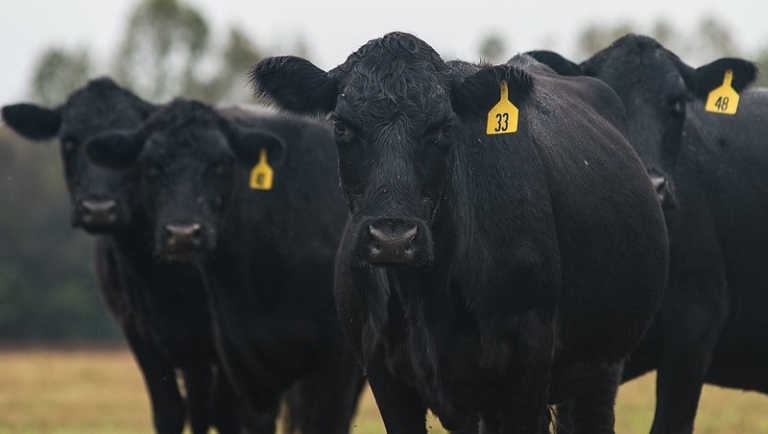
Ron Hays, Senior Farm and Ranch Broadcaster, is back talking with Derrell Peel, OSU Livestock Market Economist on insights for cattle numbers going into 2023.
Because the latest cattle on feed report was not a quarterly report, breakdown information between heifers and steers was not available. Many replacement heifers this year have not been retained back into beef herds, which is something Derrell Peel has been watching closely, as it will impact the eventual beef cow herd number in the start of 2023.
“In terms of what is in the feedlots right now, we don’t get that data except quarterly, so it will be October 1 before we get that,” Peel said. “But we do get weekly slaughter data and so when you update that for the most recent data, heifer slaughter so far this year is up 4.2 percent while steer slaughter is down 2.2 percent.”
Peel said total yearling slaughter is just about unchanged from a year ago, but the increase is all in the heifer side.
“If you look at heifer slaughter plus cow slaughter this year, 51 percent of total cattle slaughter is due to female slaughter,” Peel said. “We have not had female slaughter represent more than 50 percent of cattle slaughter since about 1986. So, it is just one more way to see that we really are cutting into our factory, if you will, in terms of the herd of breeding animals and potential breeding animals that we are going to have to work with in the coming months.”
As Peel crunches the numbers throughout the year, he sees a significant decline in the replacement heifer numbers coming up.
“I think the net culling that we calculate, so when we take that beef cow slaughter divided by the herd size, we are going to set a new record on that,” Peel said. “It is almost inevitably at this point going to be over 13 percent, where it typically averages 9.6 or 9.7 percent on a long-term basis, so we are going to be well above that in terms of the net culling that we have done to the herd this year.”
As for beef cow inventory numbers on January 1, Peel said he sees a minimum of a 3 percent decline.
“It has the potential to approach 3.5 or even 4 percent on the upper end or at least 3.75 percent,” Peel said.
In terms of the overall fed cattle market, Peel said there are clearly going to be some limitations on cattle coming out of feedlots and that will help lever that market up.
“At the same time, what we have got going on the other end, of course, is that these feeder prices as we already said are moving up, they are very strong and we continue to see, of course, very high cost of gain, so there are issues on both sides,” Peel said. “I do think overtime that probably is a little bit better for the feedlots, but they are going to be in a little bit of a squeeze here because the other thing they have to do is try to maintain numbers in the feedlot.”
In the short run, Peel said placing these lightweight cattle helps feedlots maintain numbers because they are going to stay on feed a long time even though the turnover rate is going down.
“But, eventually, again, it will catch up with them at some point and they just won’t have as many animals to feed and that is going to add additional pressure,” Peel said. “That probably doesn’t hit now until maybe into early 2023.”
Click the LISTEN BAR below to hear more from Ron Hays and Derrell Peel on insights for cattle numbers going into 2023.
The Beef Buzz is a regular feature heard on radio stations around the region on the Radio Oklahoma Network and is a regular audio feature found on this website as well. Click on the LISTEN BAR below for today’s show and check out our archives for older Beef Buzz shows covering the gamut of the beef cattle industry today.















